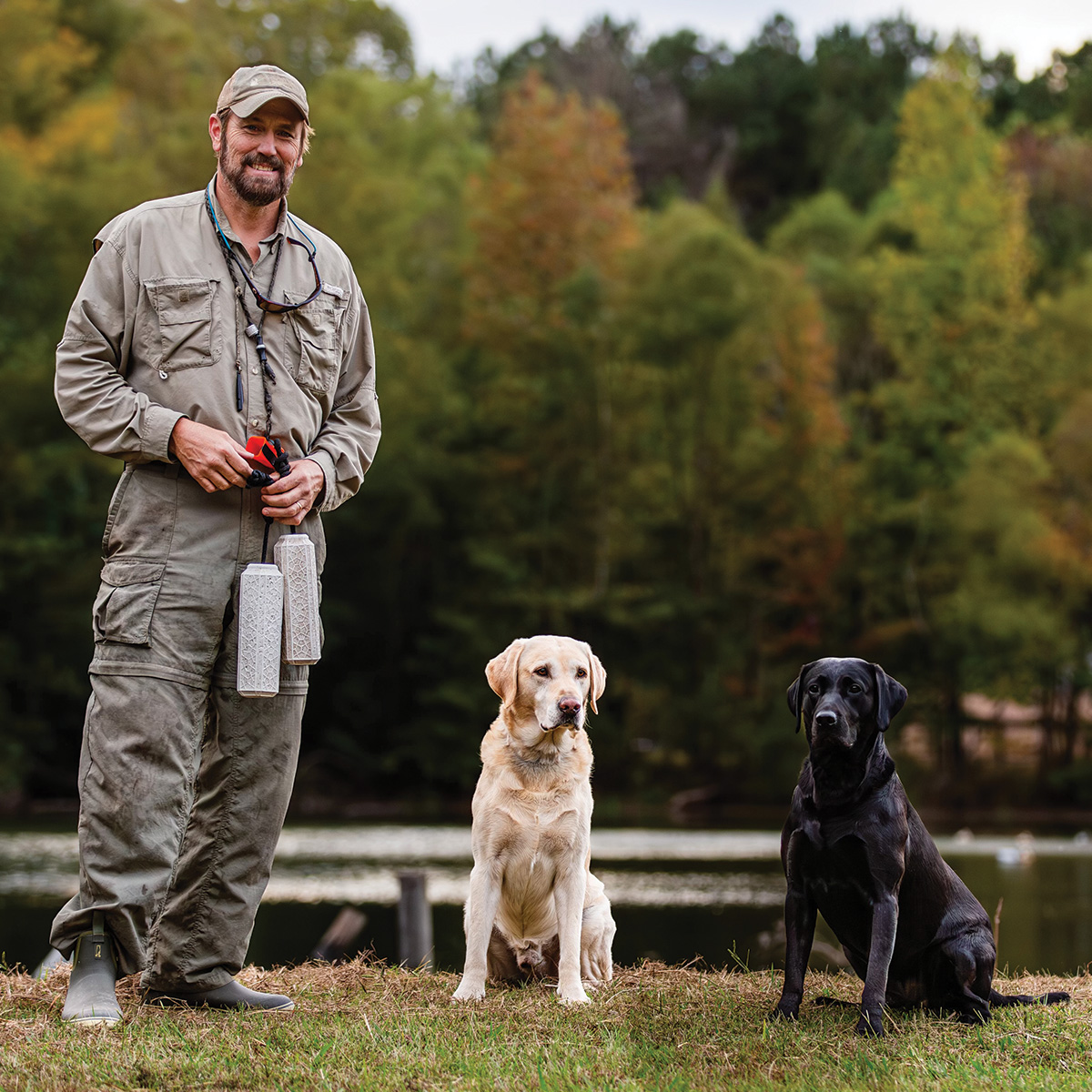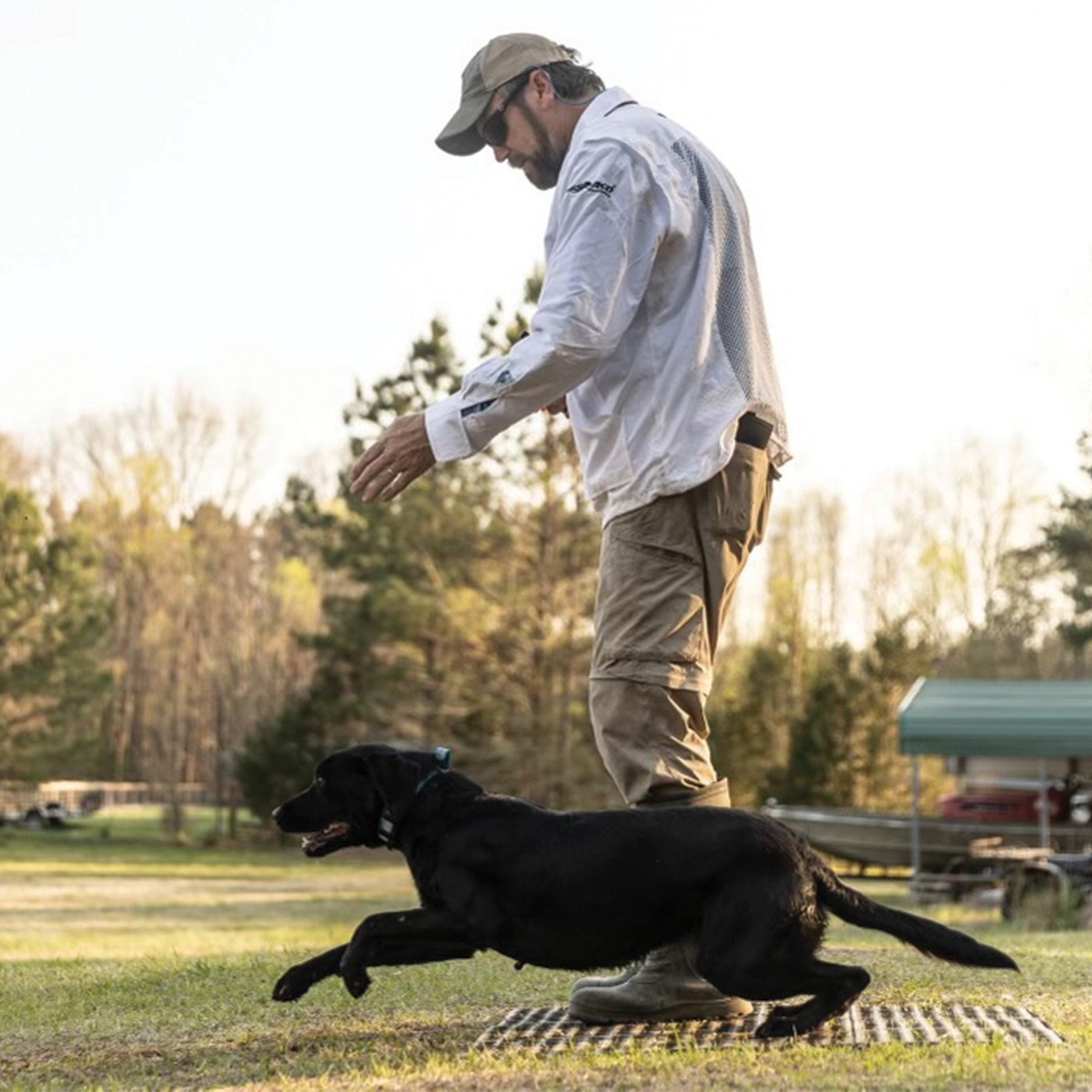Meet the Trainers: Q&A with Veteran Dog Trainer Marty Roberts
Elevate your retriever training skills with insights from Marty Roberts of Sporting Life Kennels
Elevate your retriever training skills with insights from Marty Roberts of Sporting Life Kennels


Meet veteran retriever trainer Marty Roberts from Sporting Life Kennels.
Location: Oxford, Mississippi
How long have you been a trainer? I trained my first retriever in 1982.
Do not get in a hurry. "Slow is smooth, smooth is fast." Make sure to build the right foundation.
Follow a program, most of the older books are outdated. Modern methods using balanced training are the way to go. Our online program is Retriever University. Retrieveruniversity.com
The biggest mistakes are that they get in a hurry. They spend way too long on a daily lesson and move too quickly leaving holes in the basics.
One syllable names are best, however, we have trained plenty that had two syllables and they were just fine.
A pet peeve of mine is naming a dog that rhymes with a command, such as Mack rhymes with “back”, Teal rhymes with “heel”, Grace rhymes with “place”, Whit rhymes with “sit” and so on.. It can be very confusing to a dog. So, think about the words you will be using to work a dog and name the dog appropriately.

The basics are fairly easy to teach if you follow a plan and stick to it. We train using food as a puppy and then phase out the food as we layer in pressure once they begin formal training. This produces a bold and confident pup. Then most everything that follows is easier.
Keep daily notes and have a plan for each day for training. Of course, running blind retrieves is the ultimate goal and they are never easy to teach, however, if the foundation is there it falls into place. I can't stress enough to follow an online program.
We like to do memory-type retrieves as we can start that when they are young. We use food bowl targeting drills initially to teach a puppy to take a good line to a bucket or to white electric fence post. Then we repeat this with paint rollers and small bumpers. By the time we start formalizing training they are used to a delayed retrieve, and this teaches them patience.
Once they are through Force Fetch and have a solid delivery and are doing multiple retrieves or even before they are doing multiples and they understand they should be steady, then we use a tree stand type dog stand and leash or use a chain to clip to their collar. We will step away from them and throw bumpers and have them watch us go and pick them up. However, you always want to work some retrieves for them in the mix. If we have a fire-breathing-dragon type dog, you could make him do this every day for several weeks before continuing work in the field. You can't do enough of these denials. Then start bringing in other dogs and handlers to work on honoring.
One last thing, when you first hunt a young dog, leave your gun at home and go with one or two friends and let them shoot.
Focus on your pup. Leash him so even if he breaks, he won't get away with it. The steadiest dogs are often the ones where their owners did not even shoot at all their first season.
I'm not saying to do that, but I'm saying it can really pay off for the long term.
In my opinion whining is mostly an inherited trait. That makes it very hard to eliminate. At our kennel, if we have a dog that whines, then we will not breed that dog.
Too many dogs that whine can get Hunt Test titles and then they are bred and not only pass down all the good genetics, but they also pass down the bad as well.
The best way to eliminate whining is to get pups from dogs that don't whine.
With that being said, if a dog is on the line when training and makes even a small squeak or whine, we will immediately say, “quiet” or “hush” and snap the lead and either put them back in the trailer or make a 20-yard circle and come back to the line and repeat. They will not be allowed to pick up a mark if they make noise. Some folks will say, “hush” and nick the dog with an e-collar. That can work or make it worse, it depends on the dog, the handler, and the timing.
I've heard of some folks using lemon juice and when the dog whines they say, "hush or quiet" and squirts the juice in their mouth. With some dogs that has worked.
But then again, its best with starting with a pup from non-whining bloodlines.
Training early is best. The earlier the better. Or later in the evening after work, however, with the ambient heat it is still warm.
Have a training plan, keep sessions just long enough to get the lesson you want. Also be cognizant of the condition of the dog. Keep a bowl of cool water nearby. Remember, ponds in the summer can actually be hot and can make a dog even warmer than not using it.

First of all, don’t rush it. Some folks want to expose their pup to waterfowl hunting at very young ages. Some as young as 10 to 24 weeks. In my opinion way more can go wrong then go right. I cringe when I hear about this.
For me I want the pup, fully obedience trained, gun broke, steady to shot, force fetched, e-collar conditioned, doing multiple marks, working off of a dog stand, out of dog blinds, picking up both live and dead birds and have a very solid delivery. We even have a duck pit in one of our fields that we have pups work out of before they go home from training. For most pups, they should be at least 10 months old and older is even better, have had solid training and then start slow with one or two shooters, and you focus on the pup and NOT shooting. We always tell clients to take a bumper or bumpers along and work the pup to get them used to a new environment and or if things are slow to make it fun. If it is slow, hunt the pup for an hour or two and then take it back to the truck. We always want the pup to have a positive experience.
First of all, breaking. This goes back to the handler.
Second, most folks stop training at home in the winter, so the obedience gets sloppy. Third, blind retrieve work breaks down unless, again, the handler trains at home running blind drills to keep them sharp. We are all guilty of that!
At my kennel, we say we want our dogs "Calm, but ready.” In fact, that is our mantra. We breed for that. We want a dog with a ton of drive, but also to have an off switch and self-control. That is reached by good breeding and solid training. This is our expectation.
Ducks Unlimited uses cookies to enhance your browsing experience, optimize site functionality, analyze traffic, and deliver personalized advertising through third parties. By continuing to use this site, you agree to our use of cookies. View Privacy Policy